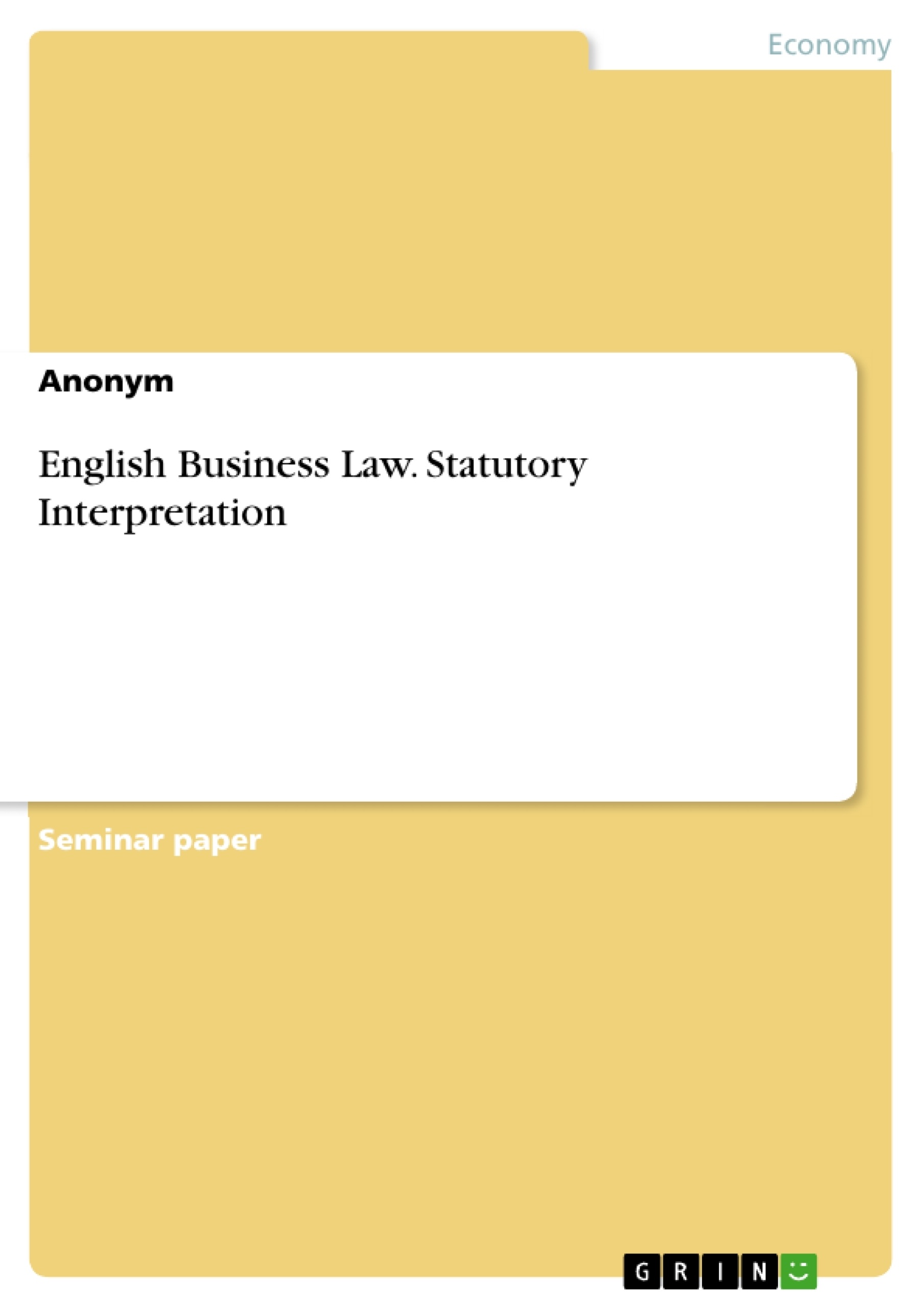The legal system of England and Wales is based on common law, therefore the primary source of law is to follow a decision made in a precedent case. But as statute law becomes more important, this paper aims to give an insight how statutes are passed and, more importantly, how they are interpreted. Different rules related to statutory interpretation are explained and intrinsic as well as extrinsic aids are mentioned. Additionally, using the example of a specified case, contract law is introduced by analysing possibilities to proof misrepresentation along with its consequences and possible damages.
Inhaltsverzeichnis (Table of Contents)
- Introduction to Business Law
- Introduction to Business Law Assignment
- Introduction to the sources of English Law
- How is a statute passed?
- Interpretation of statutes
- Rules of statutory interpretation
- Intrinsic aids
- Extrinsic aids
- Presumptions
- Conclusion
Zielsetzung und Themenschwerpunkte (Objectives and Key Themes)
This assignment aims to critically analyze the effectiveness of statutory interpretation in achieving the objective of access to justice within the English legal system.
- Sources of English Law
- Statutory Interpretation
- Miscarriage of Justice
- Parliamentary Supremacy
- Rules of Statutory Interpretation
Zusammenfassung der Kapitel (Chapter Summaries)
The assignment begins by exploring the sources of English law, highlighting the significance of common law and the growing influence of statute law. The process of how a statute is passed through Parliament is then explained in detail. This includes the various stages, from First Reading to Royal Assent, with a focus on the potential for ambiguity and the resulting challenges faced by judges in interpreting legislation.
The main focus of the assignment lies in the interpretation of statutes. The author examines the different rules of interpretation, particularly the literal, golden, and mischief rules. Each rule is explained with examples, demonstrating how their application can lead to divergent outcomes and potential miscarriages of justice. The literal rule is illustrated through the case of Inland Revenue Commissioners v Hinchy, emphasizing the potential for discrepancies between parliamentary intent and judicial interpretation.
Schlüsselwörter (Keywords)
This assignment explores the concepts of English Law, Statutory Interpretation, Miscarriage of Justice, Parliamentary Supremacy, and the different rules of statutory interpretation, including the literal, golden, and mischief rules. It examines the challenges faced by judges in interpreting legislation and the potential for discrepancies between parliamentary intent and judicial interpretation.
- Quote paper
- Anonym (Author), 2008, English Business Law. Statutory Interpretation, Munich, GRIN Verlag, https://www.grin.com/document/285782



